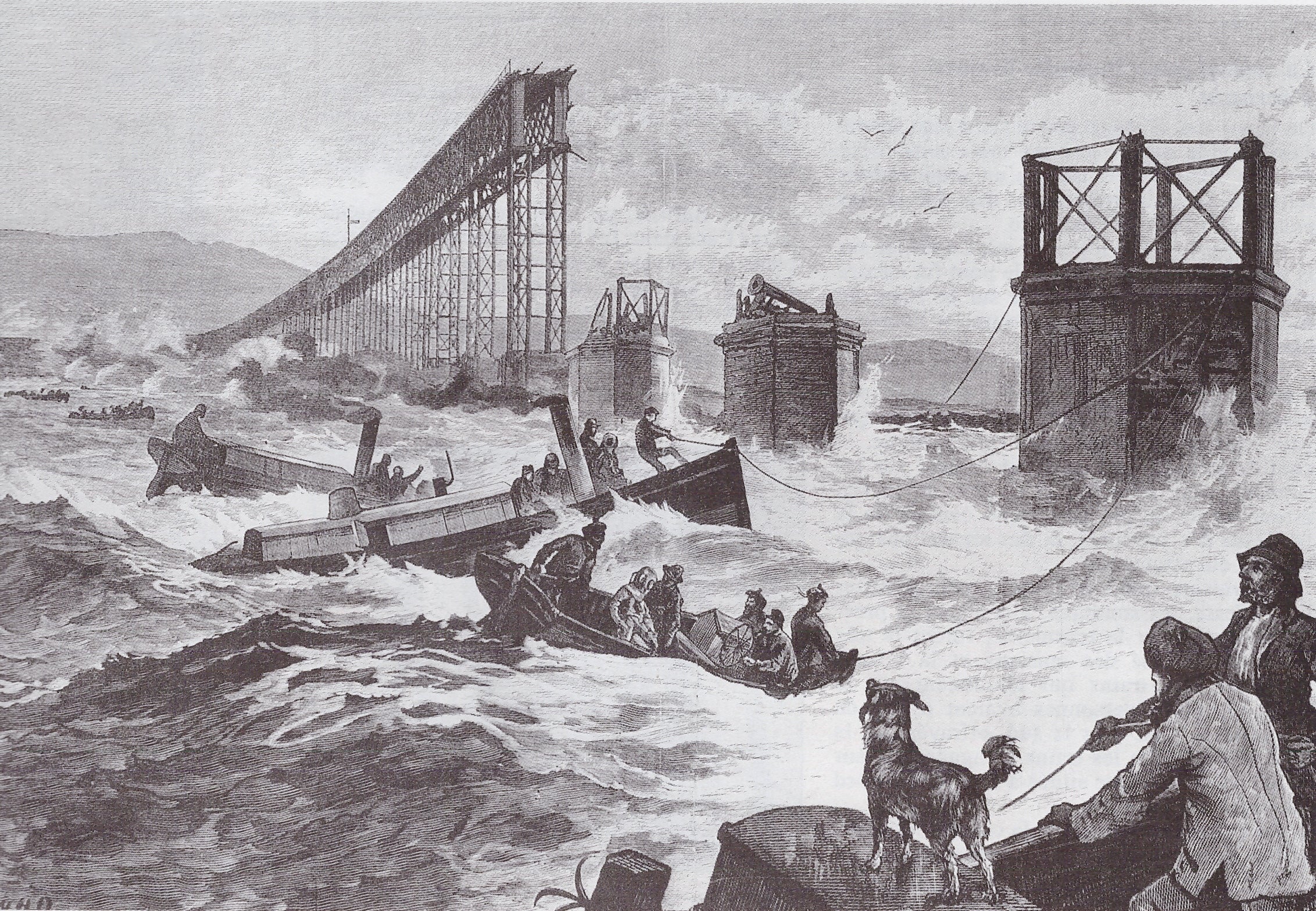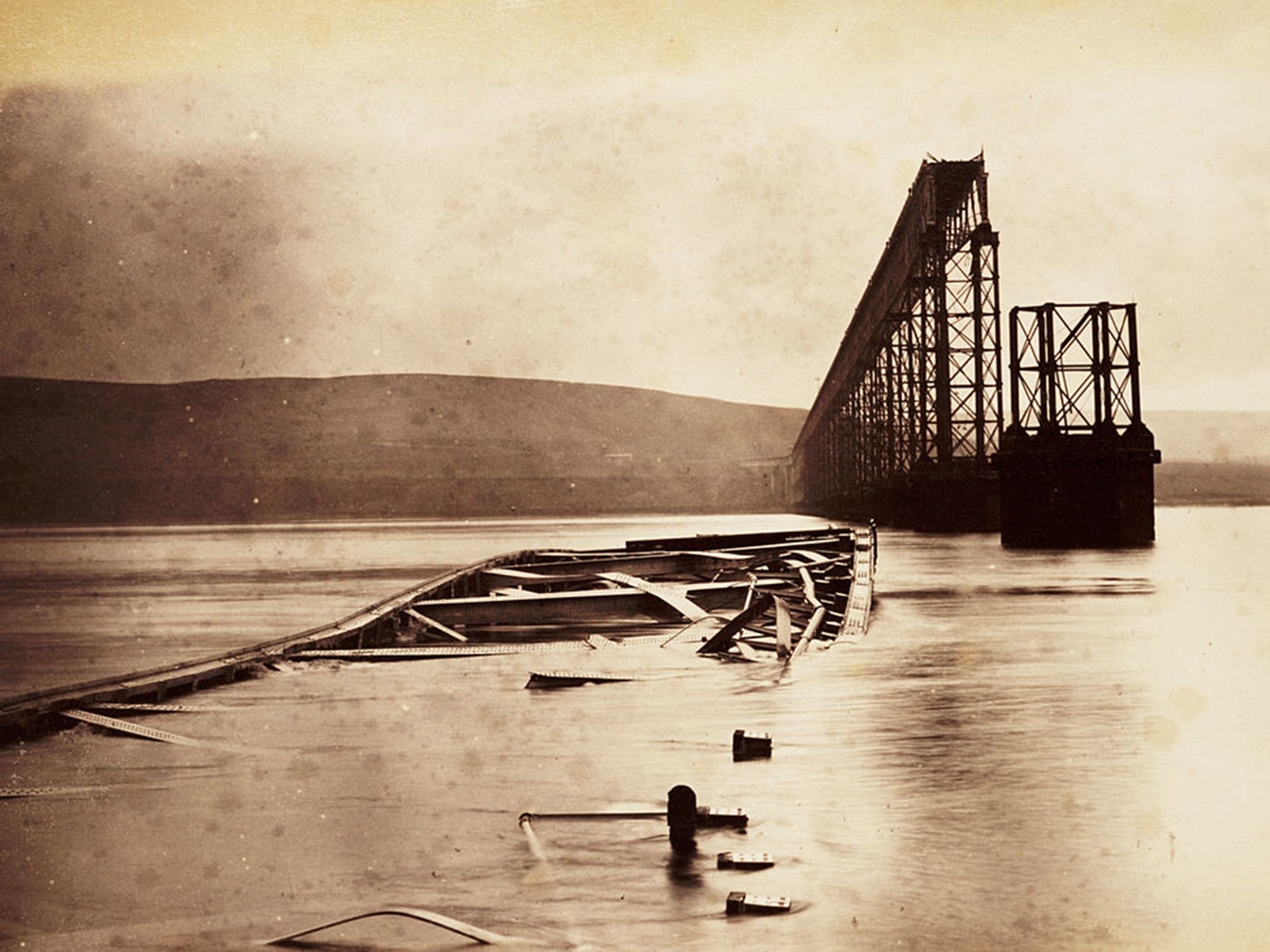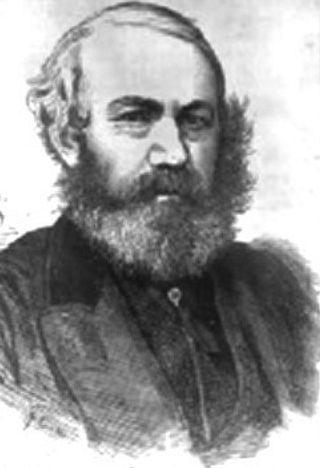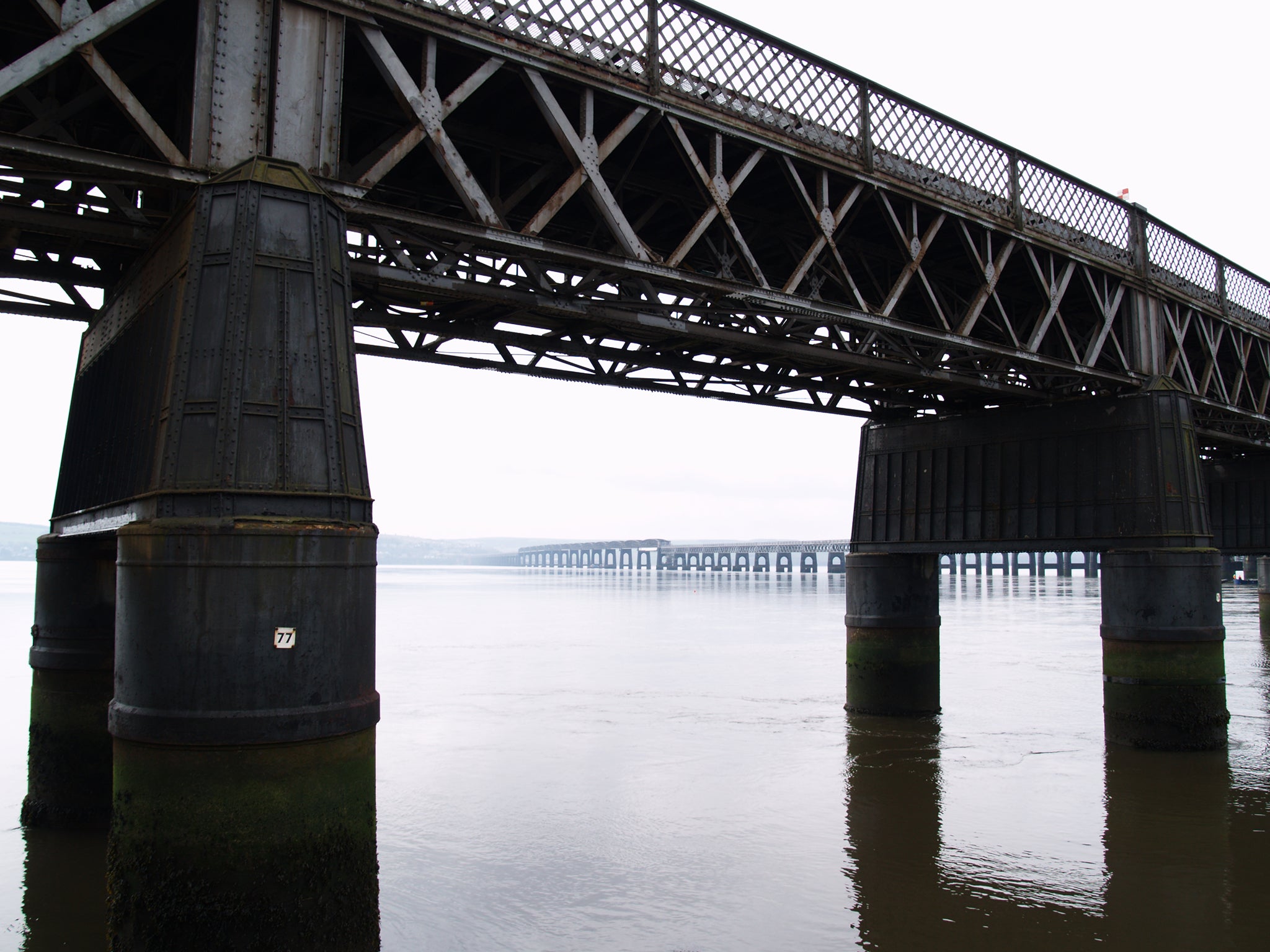Thomas Bouch: Architect of the Tay Bridge disaster
Incompetent engineering and atrocious weather led to the deaths of an estimated 75 people in the 1879 tragedy. Godfrey Holmes looks back, 140 years on, at the man most responsible for one of Britain’s worst rail disasters

Your support helps us to tell the story
From reproductive rights to climate change to Big Tech, The Independent is on the ground when the story is developing. Whether it's investigating the financials of Elon Musk's pro-Trump PAC or producing our latest documentary, 'The A Word', which shines a light on the American women fighting for reproductive rights, we know how important it is to parse out the facts from the messaging.
At such a critical moment in US history, we need reporters on the ground. Your donation allows us to keep sending journalists to speak to both sides of the story.
The Independent is trusted by Americans across the entire political spectrum. And unlike many other quality news outlets, we choose not to lock Americans out of our reporting and analysis with paywalls. We believe quality journalism should be available to everyone, paid for by those who can afford it.
Your support makes all the difference.In 1849, aged just 26, Thomas Bouch was precociously promoted to chief engineer and manager of the Edinburgh, Perth and Dundee Railway, the predecessor of North British Railway.
The hapless Bouch goes down in history as the man charged with building the longest rail bridge in the world – only for it to collapse less than two years later. Just 50 years from the birth of passenger railways in Britain, this was a task too daunting; strong side-winds, fog, extremely busy river traffic, soft bedrock and low capital reserves made it nearly impossible.
The complex and difficult nature of this mammoth project, along with Bouch’s incompetency, is what led to the tragic death of an estimated 75 passengers when the Firth of Tay structure fell into the freezing waters. A year later, Bouch himself would die in ruin, bringing the true death toll to 76.
Prior to the bridge, Bouch’s first undertaking was to make the docks of Tayport on the south bank of the Tay, opposite Dundee, far more efficient in its transit of passengers – and more importantly, bulky goods and minerals by ferry: specifically the world’s very first rail-wagon ferry, Leviathan.
Yet following this assignment, Thomas Bouch soon became freelance, leaving behind a trail of poor workmanship, fluffed contracts and missed deadlines on the St Andrews Railway, at Leven, East Fife, Crieff Junction, Leadburn, Linton – all over Scotland.
However, an enlarged and emboldened North British Railway still hankered after a static railway crossing from either Tayport to Harecraigs, or further upstream, Wormit to Dundee Central. This had previously been an elusive dream: a direct route from Edinburgh to Aberdeen: lopping a massive third off the usual journey time of seven-and-a-half hours. Somehow, Bouch was the man for the job.
Parliament passed a bill for the latter scheme in 1870 with a contract to commence over one-and-a-half miles of bridging awarded to Hopkin, Gilkes and Co of Middlesbrough a year later. At both ends of the new line, it was to pass above high timber trusses resting on brick and skeleton-iron piers encased in concrete below water level. But in the middle – for a span of 960 metres – trains had to pass through those trusses, themselves encased, so as not to interrupt the sailing of tall ships downstream towards Perth.
Inevitably, the first Tay Bridge budgeted at £300,000 cost more than projected – but when it did take its first payload – Queen Victoria herself returning from her holiday at Balmoral on 26 September 1877, company directors were assured they’d soon recoup that outlay. Almost instantly, the carrier was able to expand its traffic at the expense of its bitter rival: the Caledonian Railway – which hitherto owned rails all the way to Dundee on a complete and coordinated, but as long as it was tedious, railway route. North British could now boast of filching a quarter of potential Glasgow to Dundee traffic from its competitor, due to that competitor’s revisiting – and needing to reinforce – no fewer than 28 old wooden bridges supporting its tracks.
Then on Sunday 28 December 1879, calamity struck. The last train of the day, travelling from Burntisland Ferry on the as yet unbridged Forth to Dundee, stopped at St Fort for ticket collection, then slowed to collect its token to proceed at the bridge’s southern signal-box – before proceeding cautiously north at 3mph, disappearing as it gathered speed in the middle of Bouch’s precarious structure.
One locomotive, with its five passenger carriages, and one luggage van fell – plunged – into the cold and swirling waters below: right in the middle of the total span, a section that never had been strong due to far too few firth supports and far too many sections where – to allow for expansion – sections of decking were not securely fastened to their pillars.
One locomotive, five passenger carriages and one luggage van plunged into the cold and swirling waters below
In retrospect, the North British should have been alarmed when – towards the end of construction – two of the bridge’s highest girders fell over, and buckled, while being lifted into place. And many Dundonians had a premonition regarding the frailty of this very novel bridge. They had heard and seen unsettling wobbles. For a year, painters and platelayers reported “chattering ties”; also vertical and lateral vibration whenever trains passed: movement measured between 0.5 and two inches wide of tolerance. And a citizen good at stopwatch reckoned more than one northbound engine emerged from its metal box, ready for its one in 73ft descent into Dundee, after only 50 seconds instead of a scheduled 60 to 65 seconds. In fact, some users, some sightseers, called the whole enterprise a foolish exploit.

By the very nature of a disaster happening where there are no survivors and very few witnesses, we can only speculate as to the scene at the moment of nemesis. A few passengers would be reading a Christmas tale; others would be chatting excitedly; more would be preparing for getting out; many intrepid travellers – by no means as cosseted as 100 years later – would be sizing up the vicious storm: gales now blowing inland from a wild open ocean; winds measured in Glasgow at 70 to 80mph.
And we can only picture the driver David Marshall – whose body drifted a full four miles by New Year’s Day – feeling he had let everybody down by “failing” to keep control. And how his guard must have instinctively grasped the brake all too late. And after the dread and dreadful fall, the splash, the clank, a few shrieks and yells, numb shock, stricken men and women fighting for air, injured, freezing, drowning, last air bubbles also attempting to surface.
After the dread and dreadful fall, the splash, the clank, a few shrieks and yells, numb shock, stricken men and women fighting for air, injured, freezing, drowning, last air bubbles also attempting to surface
Later in the week when divers recovered 46 bodies – also and amazingly, a serviceable locomotive still in use at the end of the First World War – the eventual death toll, everyone on board, was estimated at 75. Not all fares were to Dundee as the final destination, nor specifically dated 28 December.
Unbelievably, a few hard-up Glaswegians pretended either to be traumatised “survivors” in need of alms, or among the dead, that they might effortlessly stage a disappearance – or the dumping of a wife – for which they had been waiting a suitable moment. As one commentator put it: these chancers, these charlatans, “broke through the lattice girders of honesty and virtue”.
Back at Wormit, and on a horrible night, the authorising signalman Thomas Barclay missed the chance to hold the approaching train pending the hurricane blowing itself out. Nor did he have the “satisfaction” of witnessing the never-to-be-repeated drama unfolding. Instead, after crawling back indoors, he was busy filling in his log and stoking the fire.
Instead, it was his colleague Mr Watt, a surface-man sheltering in the same box, who told Barclay of three minutes of wheel-friction sparks followed by a bright flash, then nothingness. Nor was there any hope of a reassuring signal, or message, from the northern signal box that they’d had an arrival. If only there had been 28 supporting piers stretched out across the Firth instead of 14. If only the Board of Trade had not conducted its February 1878 safety tests in benign conditions. If only vital castings and components had been tooled with skill on Teesside, not at Gilkes’ brand new, but perfunctory, foundry at Wormit. If only Bouch had not had a previous relationship with – and 35,000 shares in – the construction company. And if only the task of the care and maintenance of ironwork had not been placed in the hands of a bricklayer, the oddly-named Henry Noble. If only...

By 10pm on that fateful December night, and prompted by Dundee’s alarmed and crestfallen station master, one steamer did reach the wreckage, and searched in vain for escapees clinging to floating timbers. Other rivercraft were still sheltering beneath the banks of the swollen Tay.
Already shattered by overwork, and the rejection of his grand design for a superb suspension bridge across the Firth of Forth, Sir Thomas Bouch was ruined, and dead, within 10 months of the Tay Bridge disaster. His grave can be found in Moffat, Dumfries and Galloway.
A formal inquiry followed. Inquiries were far more immediate and conducted far more efficiently in the late 19th century than the early 21st. So it was that Henry Cadogan Rothery, commissioner of wrecks – ably assisted by Colonel Yolland, inspector of railways, and William Henry Barlow, president of the Institute of Civil Engineers – were able to convene under Section 7 of the 1871 Railways Act to start hearing evidence concerning the causes and circumstances of the Tay Bridge disaster.
For Bouch, the inquiry’s verdict was ruthless and unqualified: the first Tay Bridge, a bridge no more, was badly designed, badly constructed and badly maintained: its faulty design entirely Bouch’s fault; its largely unsupervised and un-remedied construction, principally Bouch’s fault; its lackadaisical maintenance, mostly Bouch’s fault.
Ironically, a disgraced Sir Thomas Bouch did unknowingly leave some outstanding bequests – a new two-mile long Tay Bridge was approved a year after his death
Some 110 years later, Tony Blair might have echoed: “workmanship, workmanship, workmanship” – and the Tay Inquiry heard how the error-prone Bouch had previous with regard to shoddy workmanship. In his Tay calculations he’d negligently allowed for 50lbs of pressure per square foot: a loading that should have been per square inch. Beyond Bouch’s remit, North British was also irresponsible for allowing excessive speeding – more than the maximum 25mph allowed – which had loosened nuts and strained girders. Even at the last minute, Bouch might have gone to his grave less culpable: had the doomed train been blown into the depths from an exposed section of the crossing. Instead, the train had been encased; and it was within latticework that there had been the greatest potential for derailment.
Curiously, on the riverbed, certain debris was found to have fallen eastwards, not west in line with the fierce winds. That raises the possibility that those final three carriages were blown off before Bouch’s structure failed, thus unsettling the engine and front two carriages; or that the whole train jostled against side girders before breaking through; or that crucial piers and pillars gave way first, thus isolating the train above. No inquiry could come up with an exact sequence.
The inquiry still left a humbled Bouch in the iconic Firth of Forth crossing – until parliament struck out that proposition as requiring a Tay Bridge to be its complement; and there was definitely, absolutely, to be no resurrected Tay Bridge using Bouch or anything like Bouch’s design.
North British was also left humbled. Its share of Edinburgh-Dundee traffic immediately diminished from 85 per cent to 51 per cent. Worse, many of its branch-lines now headed nowhere in particular.
Ironically, a disgraced Sir Thomas Bouch did – unknowingly – leave some outstanding bequests. A new two-mile-long Tay Bridge was approved a year after his death. When completed, it stood – and stands – 60 yards to the west of the original structure: with all its 85 piers in an exact straight line. None of the old foundations was used. So it was a second Tay Bridge, double-tracked, designed by none other than the accomplished WH Barlow and built by a brilliant William Arrol that was an understated triumph when it opened on 11 July 1887.

Staying on the subject of Arrol, the Victorian age could hardly have thrown up a more uncanny genius. If only North British had discovered this talented young man five years earlier. How Arrol would have seen through Bouch and never signed off the original Tay Bridge. Arrol carried suburban railways over the streets of Glasgow; built London’s inimitable Tower Bridge, supervised the intricate ironwork of both Deal pier and a currently-stranded Brighton West Pier; into the bargain carrying the Caledonian Railway across the Clyde into the heart of Glasgow. Arrol then accumulated 54,000 tons of steel, 640,000 cubic feet of granite and 62,000 cubic feet of rubble masonry for North British’s final conquest: the Forth.
Architects and railway magnates alike were severely chastened by the Tay Bridge disaster: so much that when the beautiful and mysterious Forth Bridge – the one that nobody ever finishes painting – was built, cantilevered: its designers Sir John Fowler and Sir Benjamin Baker knew instinctively not to “do a Bouch”. That stunning bridge is now a symbol for the whole of Scotland, a Unesco world heritage site to boot.
On a comical level – can comedy ever emerge from tragedy? – William McGonagall’s elegiac poem The Tay Bridge Disaster is one of the most quoted, most enjoyed, most ridiculed, literary accomplishments in the English language, definitely the best of his 200 compositions.
Here are the first three stanzas:
Beautiful Railway Bridge of the Silv’ry Tay!
Alas! I am very sorry to say
That ninety lives have been taken away
On the last Sabbath day of 1879,
Which will be remember’d for a very long time.
‘Twas about seven o’clock at night,
And the wind it blew with all its might,
And the rain came pouring down,
And the dark clouds seem’d to frown,
And the Demon of the air seem’d to say-
“I’ll blow down the Bridge of Tay.”
When the train left Edinburgh
The passengers’ hearts were light and felt no sorrow,
But Boreas blew a terrific gale,
Which made their hearts for to quail,
And many of the passengers with fear did say-
“I hope God will send us safe across the Bridge of Tay.”
One-hundred-and-forty-two not entirely fluent lines follow; and allowing for one or two factual inaccuracies, the author takes us right through the tragedy as it unravels. McGonagall himself lived a long life, and his verse must have merit because it is still recited, and anthologised, so often. Maybe some poems have to be bad to be good: far more readable, far more accessible, than Alexander Pope or Samuel Taylor Coleridge.
Finally, because the abrupt disappearance of entire trains is such a rare occurrence, 2020’s more insulated passengers speeding from Aberdeen, through Edinburgh, towards York’s magnificent station – also its National Railway Museum – might pause to glance down to Bouch’s forlorn brick stumps: glad that in the words of every prime minister, every secretary of state, every single bumbler: “Lessons have been learnt.”
Join our commenting forum
Join thought-provoking conversations, follow other Independent readers and see their replies
Comments